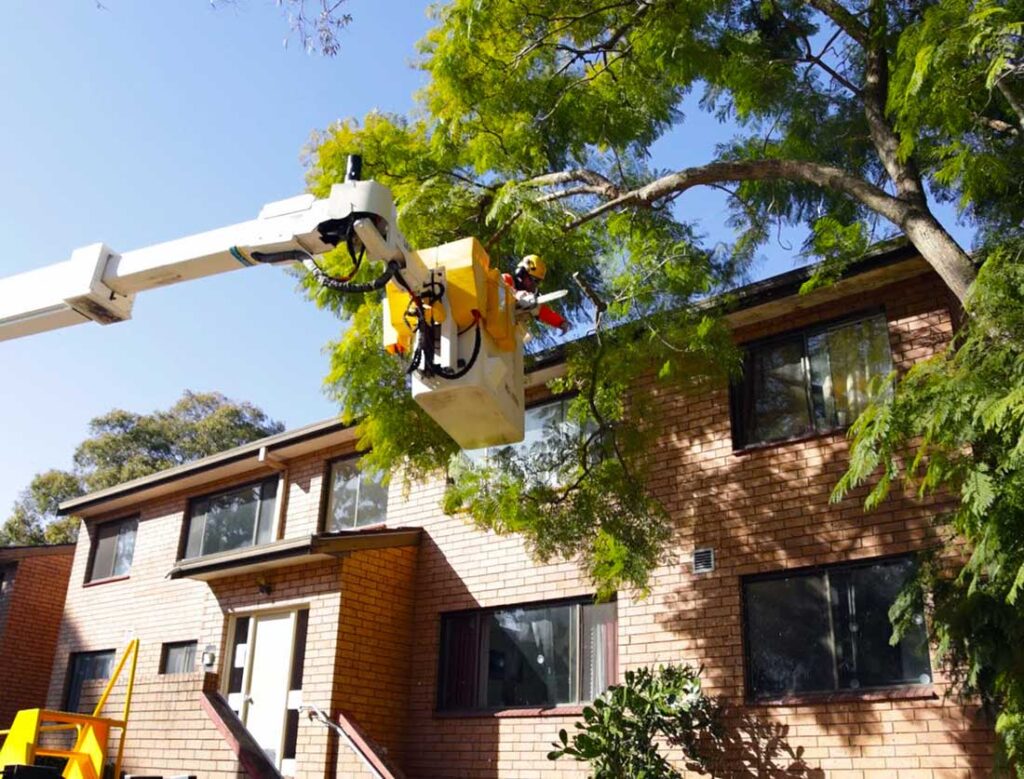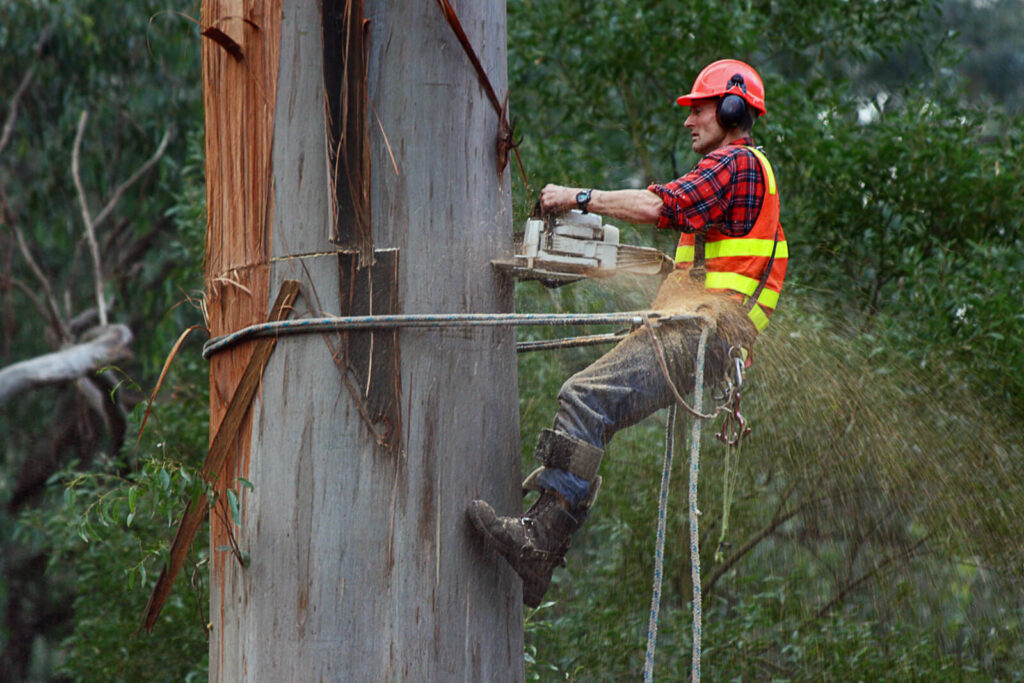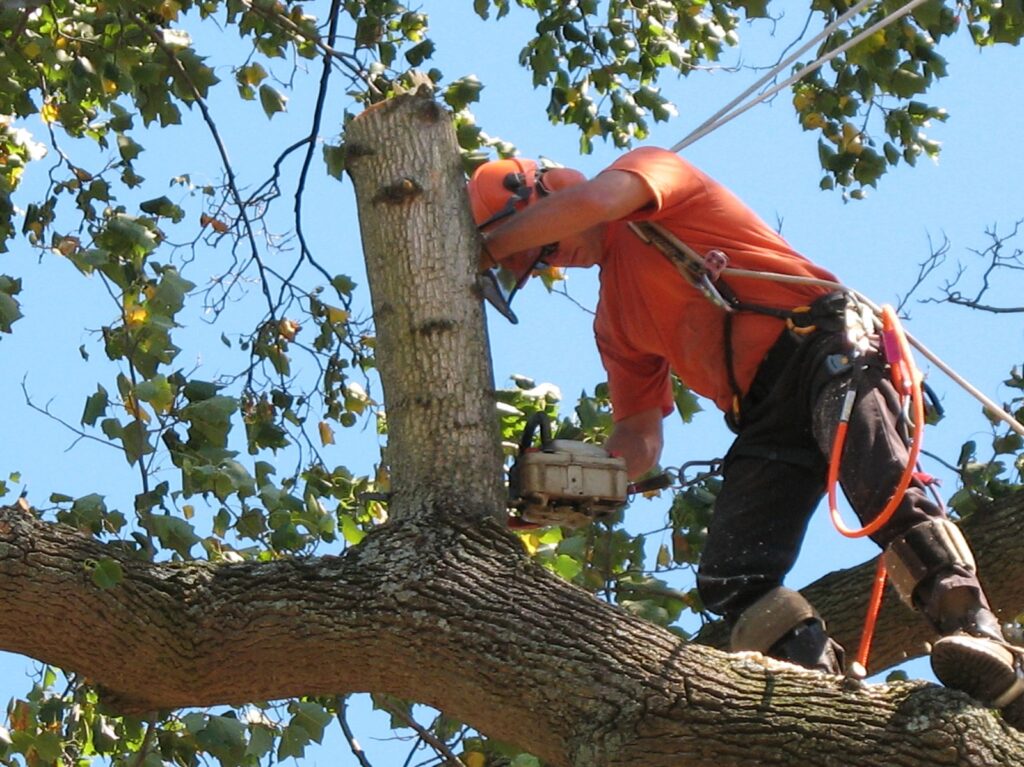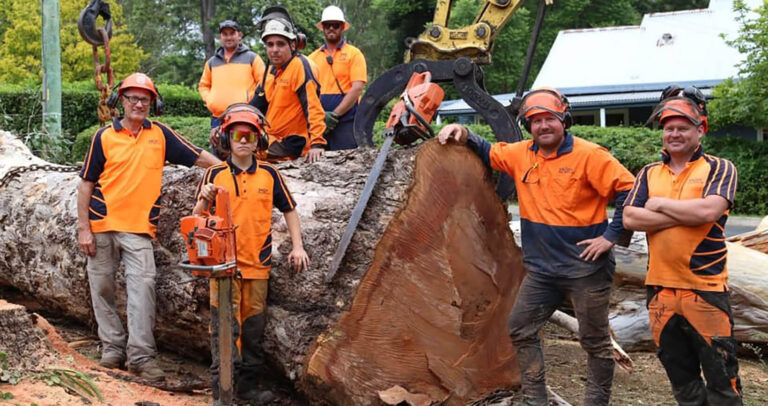Tree lopping is a common practice in the field of arboriculture that involves the removal of branches and even entire sections of a tree. While it can be beneficial in certain situations, there are also times when it should be avoided. In this article, we will explore the concept of tree lopping, its necessity, and when it should be avoided. We will also discuss alternatives to consider and provide tips for hiring a professional tree lopper.
Understanding Tree Lopping
Tree lopping, also known as tree topping or hat-racking, refers to the process of cutting off the branches or upper sections of a tree. The aim is often to reduce the tree’s height or size, promote new growth, or eliminate hazards. However, tree lopping is not as simple as just cutting off branches.
When it comes to look for tree lopping near me, there are several important factors to consider. One of the key considerations is the timing of the lopping. It is generally recommended to carry out tree lopping during the dormant season, which is usually in late winter or early spring. This is because the tree is less likely to experience stress or damage during this period, and it allows for better healing and regrowth.
Another important aspect of tree lopping is the selection of the branches to be removed. It is crucial to identify and remove only the branches that are necessary, while preserving the overall structure and health of the tree. This requires careful assessment and consideration of factors such as branch size, position, and potential impact on the tree’s stability.

What is Tree Lopping?
Tree lopping involves the removal of branches back to stubs or lateral branches that are not large enough to assume the terminal role. Essentially, it is a severe form of pruning that significantly alters the tree’s structure and appearance.
When performed correctly, tree lopping can have several benefits. It can help to reduce the risk of falling branches, especially in trees that are prone to breakage or have weak limbs. It can also improve the tree’s overall shape and appearance, making it more aesthetically pleasing. Additionally, tree lopping can stimulate new growth and rejuvenate older trees, promoting their long-term health and vitality.
The Process of Tree Lopping
Tree lopping is typically carried out using specialized equipment such as chainsaws and ropes. It involves cutting large branches or sections of the tree, often leaving behind stubs that can take years to heal. While the process may seem straightforward, it requires skill and knowledge to ensure the tree’s long-term health and vitality.
Before starting the lopping process, it is important to assess the tree’s overall health and condition. This includes checking for signs of disease, decay, or structural issues that may affect the tree’s stability. It is also essential to consider the tree’s species and growth habits, as different trees may require different lopping techniques.
During the lopping process, it is crucial to make clean and precise cuts to minimize damage and promote proper healing. Care should be taken to avoid cutting too close to the trunk, as this can create a large wound that may be difficult for the tree to heal. Additionally, the use of proper pruning techniques, such as making cuts at the branch collar, can help to minimize the risk of infection and promote healthy regrowth.
After the lopping is complete, it is important to properly care for the tree to ensure its recovery and long-term health. This may include applying wound dressings to protect exposed areas, providing adequate water and nutrients, and monitoring the tree for any signs of stress or complications.
The Necessity of Tree Lopping
There are several situations where tree lopping becomes necessary for the safety and well-being of both the tree and its surroundings.
Tree lopping, also known as tree pruning or tree trimming, is a crucial practice in arboriculture. It involves the careful removal of specific branches or parts of a tree to improve its health, appearance, and overall safety. While some may argue against tree lopping, it is important to understand that when done correctly and for the right reasons, it can offer numerous benefits.
Signs Your Tree Needs Lopping
One of the most common indicators that a tree needs lopping is when it becomes overgrown or poses a risk to nearby structures, power lines, or people. Over time, trees can grow excessively, with branches extending too close to buildings or power lines. This can create potential hazards, especially during storms or strong winds. By lopping these branches, the risk of them falling and causing damage or injury can be significantly reduced.
In addition to overgrowth, there are other signs that may indicate the need for tree lopping. Dead or decaying branches, for instance, can be a sign of disease or pest infestation. Removing these branches through lopping not only improves the tree’s overall health but also prevents the spread of disease to other parts of the tree.
Another sign that may warrant tree lopping is excessive leaning. When a tree leans too much, it can indicate a structural problem or weakened root system. Lopping the appropriate branches can help restore balance and stability to the tree, reducing the risk of it toppling over during severe weather conditions.

Benefits of Tree Lopping
When done correctly and for the right reasons, tree lopping can offer several benefits. It can enhance the tree’s structural integrity, promote new growth, improve overall aesthetics, and increase sunlight penetration. By removing dead, diseased, or damaged branches, the tree can allocate its resources more efficiently to healthy parts, stimulating new growth and improving its overall health.
Furthermore, tree lopping can be an effective way to manage the size of trees in urban environments where space is limited. In cities and suburbs, trees often need to coexist with buildings, roads, and other structures. By selectively removing branches, tree lopping can help control the size and shape of trees, ensuring they do not interfere with nearby structures or obstruct views.
Additionally, tree lopping can improve the aesthetics of a tree and its surroundings. By removing excessive branches or reshaping the tree’s canopy, it can create a more visually appealing and balanced appearance. This is particularly important in residential areas where trees contribute to the overall beauty and value of the neighborhood.
Lastly, tree lopping can increase sunlight penetration to the tree’s lower branches and the surrounding area. This is especially beneficial for gardens or lawns beneath the tree, as it allows more sunlight to reach the ground, promoting healthier vegetation and reducing the risk of fungal growth.
Overall, tree lopping is a necessary practice in arboriculture that should be approached with care and expertise. While it may seem like a simple task, it requires knowledge of tree biology, proper cutting techniques, and an understanding of the tree’s specific needs. Therefore, it is always recommended to consult with a professional arborist before undertaking any tree lopping activities.
When to Avoid Tree Lopping
While tree lopping can be beneficial, there are instances where it should be avoided due to potential risks, legal restrictions, or the availability of better alternatives.
Potential Risks and Dangers
Improper tree lopping can cause significant harm to the tree, lead to decay and disease, and compromise its stability. The excessive removal of branches can also disrupt the tree’s natural growth pattern and leave it vulnerable to environmental stresses. In certain cases, tree lopping can create hazardous conditions, especially if done without professional expertise.
One of the potential risks of tree lopping is the introduction of decay and disease. When branches are improperly cut, it can create open wounds that allow pathogens to enter the tree. These pathogens can then spread throughout the tree, leading to decay and ultimately compromising its structural integrity. Additionally, the removal of large branches can disrupt the tree’s natural defense mechanisms, making it more susceptible to pests and diseases.
Another danger of tree lopping is the disruption of the tree’s natural growth pattern. Trees have a specific structure and branching pattern that allows them to withstand environmental stresses, such as wind and storms. When branches are excessively removed, it can alter this natural structure, leaving the tree more vulnerable to these stresses. It can also lead to the development of weak, poorly attached branches that are prone to breakage.
Furthermore, tree lopping done without professional expertise can create hazardous conditions. It requires knowledge of tree biology, proper cutting techniques, and an understanding of potential risks. Without this expertise, there is a higher chance of accidents occurring, such as falling branches or damage to property. It is always recommended to hire a certified arborist who can assess the tree’s condition and perform the necessary pruning or removal.

Legal Restrictions on Tree Lopping
In many areas, there are regulations and bylaws in place that govern tree lopping practices. It is essential to familiarize yourself with these restrictions to avoid potential fines or legal consequences. Consult with local authorities or arborists to ensure you are complying with the necessary guidelines.
These legal restrictions are put in place to protect trees and preserve the environment. They often dictate the maximum amount of foliage that can be removed, the types of trees that can be lopped, and the specific circumstances under which tree lopping is allowed. By adhering to these regulations, you contribute to the conservation of trees and maintain the ecological balance in your area.
Additionally, consulting with local authorities or arborists can provide you with valuable information on alternative methods to achieve your desired outcome. In some cases, tree lopping may not be the most appropriate solution. There might be alternatives, such as selective pruning or crown reduction, that can address your concerns without causing harm to the tree.
By considering these alternatives and following the legal restrictions, you can ensure the health and longevity of your trees while still achieving your desired goals.
Alternatives to Tree Lopping
When tree lopping is not suitable or advisable, there are alternative methods to consider that can maintain the health and beauty of your trees.
Tree Pruning
Tree pruning involves the selective removal of specific branches to improve a tree’s overall structure, health, and aesthetic appeal. It is a more controlled and strategic approach that focuses on removing dead, damaged, or diseased branches while preserving the tree’s natural form.
Tree Removal
If a tree poses significant risks or is beyond repair, tree removal may be the best option. This is particularly true for trees with extensive damage, severe disease, or those that are no longer viable or desirable in their current location.
Hiring a Professional Tree Lopper
When tree lopping is necessary or deemed the best course of action, it is crucial to hire a professional tree lopper with the right expertise and equipment.
What to Look for in a Tree Lopper
When selecting a tree lopper, consider their qualifications, experience, and reputation. Look for certifications such as ISA Certified Arborists, as this indicates their adherence to industry standards. It is also wise to request references and reviews from past clients to ensure their competence and professionalism.
The Cost of Tree Lopping Services
The cost of tree lopping services can vary depending on various factors such as the tree’s size, complexity, location, and the lopper’s experience. It is recommended to obtain multiple quotes and consider the value offered by different professionals before making a decision.
In conclusion, tree lopping can be beneficial when done correctly and for valid reasons. However, it is crucial to assess the necessity of tree lopping based on the tree’s condition and potential risks. Understanding the alternatives to tree lopping and hiring a professional tree lopper can help ensure the health and safety of your trees and surrounding environment.

